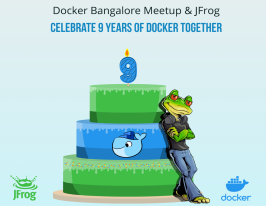Application Deployment Using Kubernetes Operator @ DevOps India
JFrog is a proud Community Sponsor for DevOps India
June 18, 2022
< 1 min read
Application Deployment Using Kubernetes Operator
Kubernetes Operator let us extend the functionality of the Kubernetes API, enabling it to configure, create, and manage instances of applications automatically using a structured process. In this talk, we will take a deep dive into the capabilities of Kubernetes controllers, security risks, and lifecycle management, including backup, recovery, and automatic configuration tuning. We will also explore the uses of Kubernetes Operator Writing Controler logic and its unique way to manage application deployments as a use case.
Presenters’ Bio:
Hey! I’m Oum Kale, a Software Engineer(RnD Team) at JFrog working on the Installer team to build Kubernetes Operator for deployment and management applications. I’m also a Core-Contributor/Member of CNCF Incubating project LitmusChaos. A Sporty guy International Rated Chess Player.







